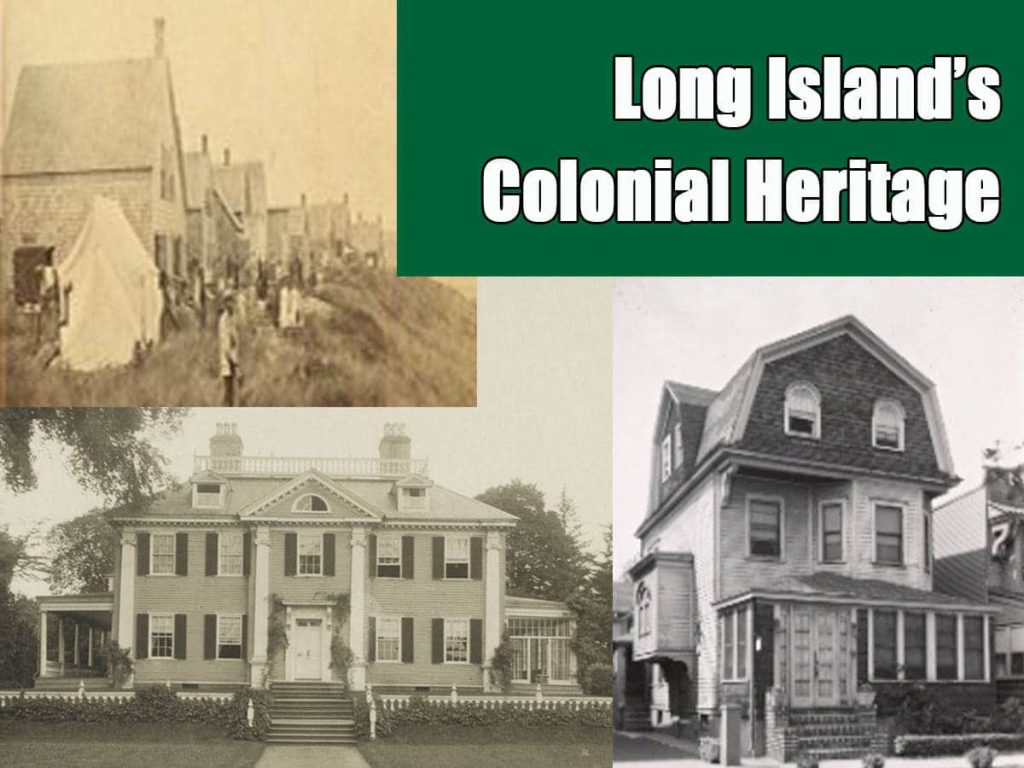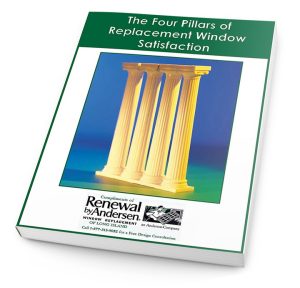

Welcome to Renewal by Andersen of Long Island’s history class. Today’s topic is a brief history of architectural styles in Colonial America. When you drive throughout Long Island’s neighborhoods, especially those established before the turn of the twentieth century, you’ll find a diverse collection of architectural styles and ethnic enclaves. Early settlers brought their own cultures and unique building traditions to the New World. Although the buildings they built resembled the structures “back home,” people had a different set of resources and environmental influences to deal with when they built their homes in Colonial America. The climate was different, the landscape was different and building materials available may not have been the same ones used in Spain, Germany, the Netherlands or one of the other countries the settlers left behind. As time passed, innovation and necessity drove design, construction and modification, but even today you’ll find subtle (and not so subtle) influences dating back to the 17th, 18th and 19th centuries.
Colonial Homes: Do You Know Your Home’s Architectural Heritage?
On Long Island, one of the most popular architectural styles is the Colonial. Symmetry is perhaps the most recognizable feature. Windows flanking a centered entry door provide a balanced visual effect with similar, or more likely identical, grille patterns, window shapes and sizes. Typically, the exterior facade is brick or clapboard, depending on when the home was built.
Modern homes often use rectangular transoms with vertical grilles above the windows flanking the door to provide a bit of visual interest without detracting from the overall aesthetic, Some homeowners add a half circle window over the entrance and narrow side-lights to create a unique appearance or showcase a beautiful front door. Although you probably would not have seen patterned glass in Early American homes, installing patterned glass in side-lights and over-the-door windows is acceptable today and is an opportunity to express your personal decorating style and personality.
There are multiple variations other than the ranch that fall under the Colonial style umbrella, including the single-story Cape Code, sometimes called the New England Colonial, Georgian, Dutch Colonial and Federalist.
Cape Cod: Comfort and Simplicity
The Cape Cod is a simple, compact, typically unadorned single-story home. Originally designed to withstand harsh winter conditions with their steep roofs to shed snow, these structures may have been described as functional and sturdy. Today, people often describe the Cape Cod style as comfortable, cozy, humble, and practical. Very often, the simple Cape Cod roofline is modified as families grew and added a dormer, or two to the former attic. Unlike the Colonial, which often uses a symmetrical grille pattern that mimics early windows constructed with 9 to 12 equally sized panes, replacement windows for Cape Cod styled homes typically don’t have grilles or other embellishments. Simplicity takes precedence over balance. The entrance may be centered in the front or on the side. If side-lights are present, you may see horizontal grilles, but intricate patterns would be out of place in this style home.
Dutch Colonial: A Mixed Message
Quintessential Dutch styling presents a modest curb appeal. Typically featuring a central front door and balanced windows, early Dutch Colonial homes were most often built as a single-story or a story and a half. Modern homes may have two full stories, with bedrooms on the second floor “under the roof.” Dormers installed on the front of the house and/or the sides allow abundant light to penetrate interior spaces and encourage natural ventilation. One of the defining characteristics of this style is the gambrel roof which makes the home resemble a barn. Dutch Colonial design has the same simple facade as the Cape Cod, but the interior is more formal with rooms flanking a central hall. Small circle windows, arched windows and oval shapes complement the flared eaves and gambrel roof lines, so it’s possible to add a touch of visual interest while maintaining the overall balance. Flanking a large second story window with smaller oval windows is one option, but there are many ways to incorporate unique design elements. Grilles are optional, depending on whether you want to present a traditional appearance or a more modern look.
Whether you want to upgrade your Colonial, or you want to improve energy-efficiency in your Dutch influenced home, we can help. With Energy-Star certified replacement windows to save you money on your heating and air conditioning bills and opportunities to create custom grille patterns or design transoms with patterned glass, we are confident our Renewal by Andersen of Long Island team can help you achieve your financial and decorating goals. Ready to get started? Just fill in the short form on this page to request more information or give us a call toll-free at (866) 609-5033 to schedule a free, no-obligation home consultation to discuss updating your home with modern replacement windows and patio doors.
Images courtesy of the New York Public Library Digital Collections

Learn Everything You Need to Know BEFORE Buying Replacement Windows